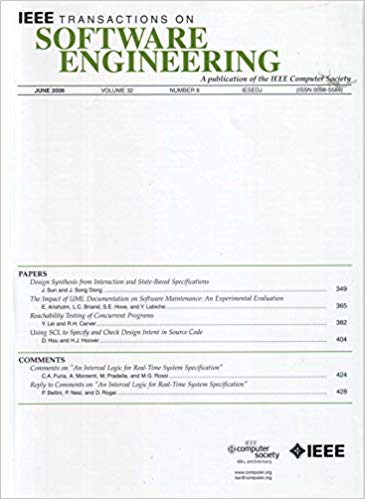GNNCONTEXT:基于gnn的编程任务代码上下文预测
IF 5.6
1区 计算机科学
Q1 COMPUTER SCIENCE, SOFTWARE ENGINEERING
引用次数: 0
摘要
代码上下文模型包括源代码元素及其与编程任务相关的关系。在软件工具中获取和使用代码上下文模型可以使软件开发实践受益,例如代码导航和搜索。先前的研究已经探索了利用代码的结构信息或开发人员与集成开发环境的交互历史来自动构建代码上下文模型的方法。然而,这些方法主要捕获代码元素的浅层语法和词法特征,捕获相邻代码元素之间的上下文和结构依赖关系的能力有限。在本文中,我们提出了GNNContext,一种基于图神经网络预测代码上下文模型的新方法。我们的方法利用代码表示学习模型来捕获代码元素的语法和语义特征,同时使用图神经网络来学习代码上下文模型中相邻代码元素之间的结构和上下文信息。为了评估我们的方法的有效性,我们将其应用于包含3879个代码上下文模型的数据集,这些模型来自三个Eclipse开源项目。评估结果表明,我们提出的方法GNNContext可以显著优于最先进的代码上下文预测基线,在不同步骤的预测中,平均倒数排名、前1、前3和前5的召回率分别提高了62.79%、56.60%、73.50%和81.89%。此外,我们的方法在跨项目评估设置中展示了稳健的性能。本文章由计算机程序翻译,如有差异,请以英文原文为准。
GNNContext: GNN-based Code Context Prediction for Programming Tasks
A code context model comprises source code elements and their relations relevant to a programming task. The capture and use of code context models in software tools can benefit software development practices, such as code navigation and search. Prior research has explored approaches that leverage either the structural information of code or interaction histories of developers with integrated development environments to automate the construction of code context models. However, these approaches primarily capture shallow syntactic and lexical features of code elements, with limited ability to capture contextual and structural dependencies among neighboring code elements. In this paper, we propose GNNContext, a novel approach for predicting code context models based on Graph Neural Networks. Our approach leverages code representation learning models to capture both the syntactic and semantic features of code elements, while employing Graph Neural Networks to learn the structural and contextual information among neighboring code elements in the code context models. To evaluate the effectiveness of our approach, we apply it to a dataset comprising 3,879 code context models that we derive from three Eclipse open-source projects. The evaluation results demonstrate that our proposed approach GNNContext can significantly outperform the state-of-the-art baseline for code context prediction, achieving average improvements of 62.79%, 56.60%, 73.50% and 81.89% in mean reciprocal rank, top- 1, top-3, and top-5 recall rates, respectively, across predictions of varying steps. Moreover, our approach demonstrates robust performance in a cross-project evaluation setting.
求助全文
通过发布文献求助,成功后即可免费获取论文全文。
去求助
来源期刊

IEEE Transactions on Software Engineering
工程技术-工程:电子与电气
CiteScore
9.70
自引率
10.80%
发文量
724
审稿时长
6 months
期刊介绍:
IEEE Transactions on Software Engineering seeks contributions comprising well-defined theoretical results and empirical studies with potential impacts on software construction, analysis, or management. The scope of this Transactions extends from fundamental mechanisms to the development of principles and their application in specific environments. Specific topic areas include:
a) Development and maintenance methods and models: Techniques and principles for specifying, designing, and implementing software systems, encompassing notations and process models.
b) Assessment methods: Software tests, validation, reliability models, test and diagnosis procedures, software redundancy, design for error control, and measurements and evaluation of process and product aspects.
c) Software project management: Productivity factors, cost models, schedule and organizational issues, and standards.
d) Tools and environments: Specific tools, integrated tool environments, associated architectures, databases, and parallel and distributed processing issues.
e) System issues: Hardware-software trade-offs.
f) State-of-the-art surveys: Syntheses and comprehensive reviews of the historical development within specific areas of interest.
 求助内容:
求助内容: 应助结果提醒方式:
应助结果提醒方式:


